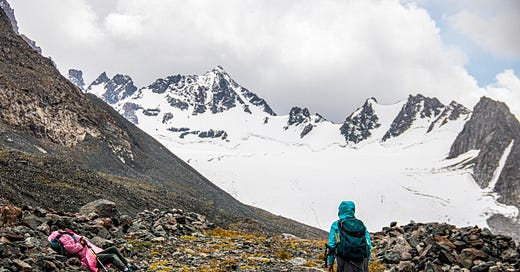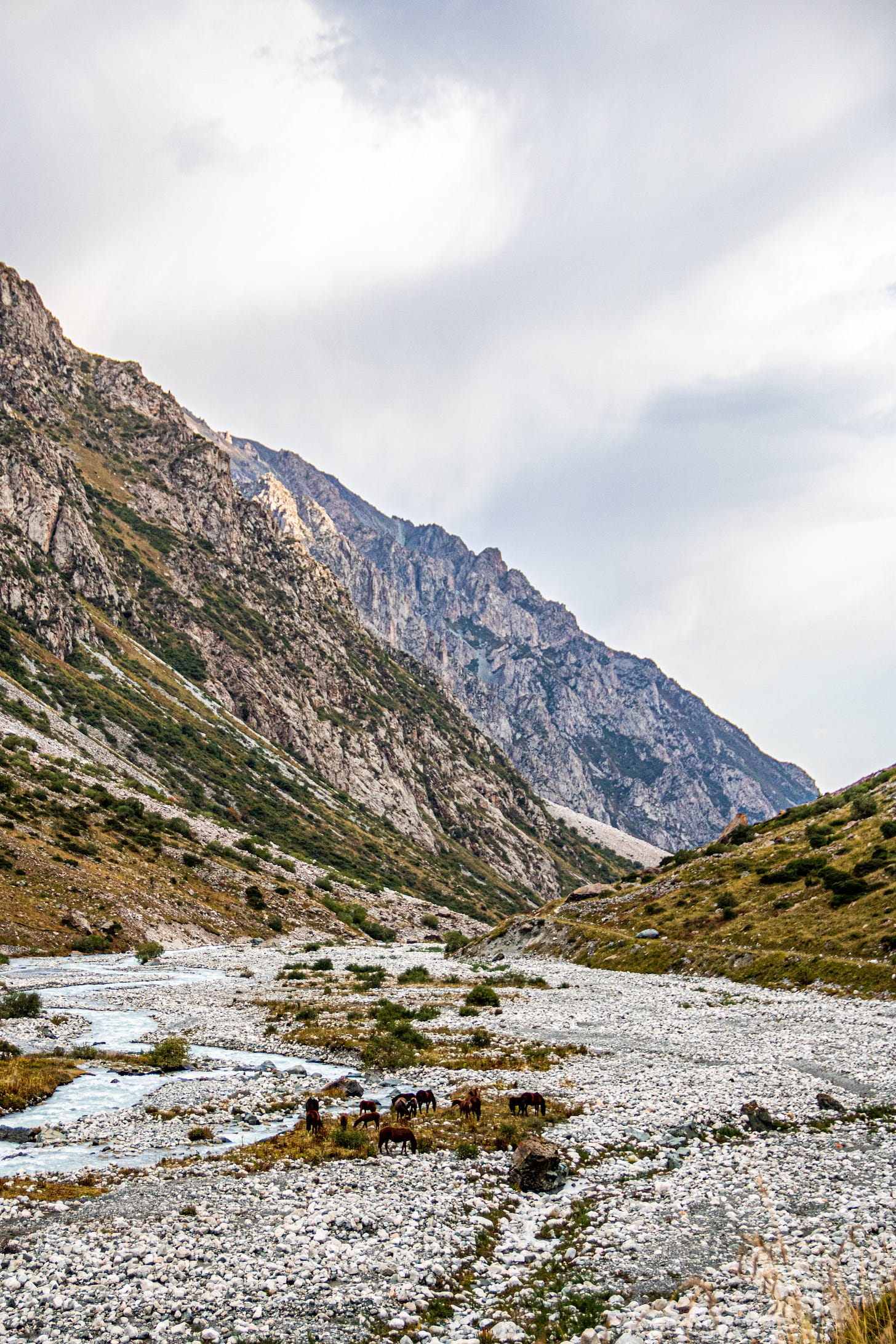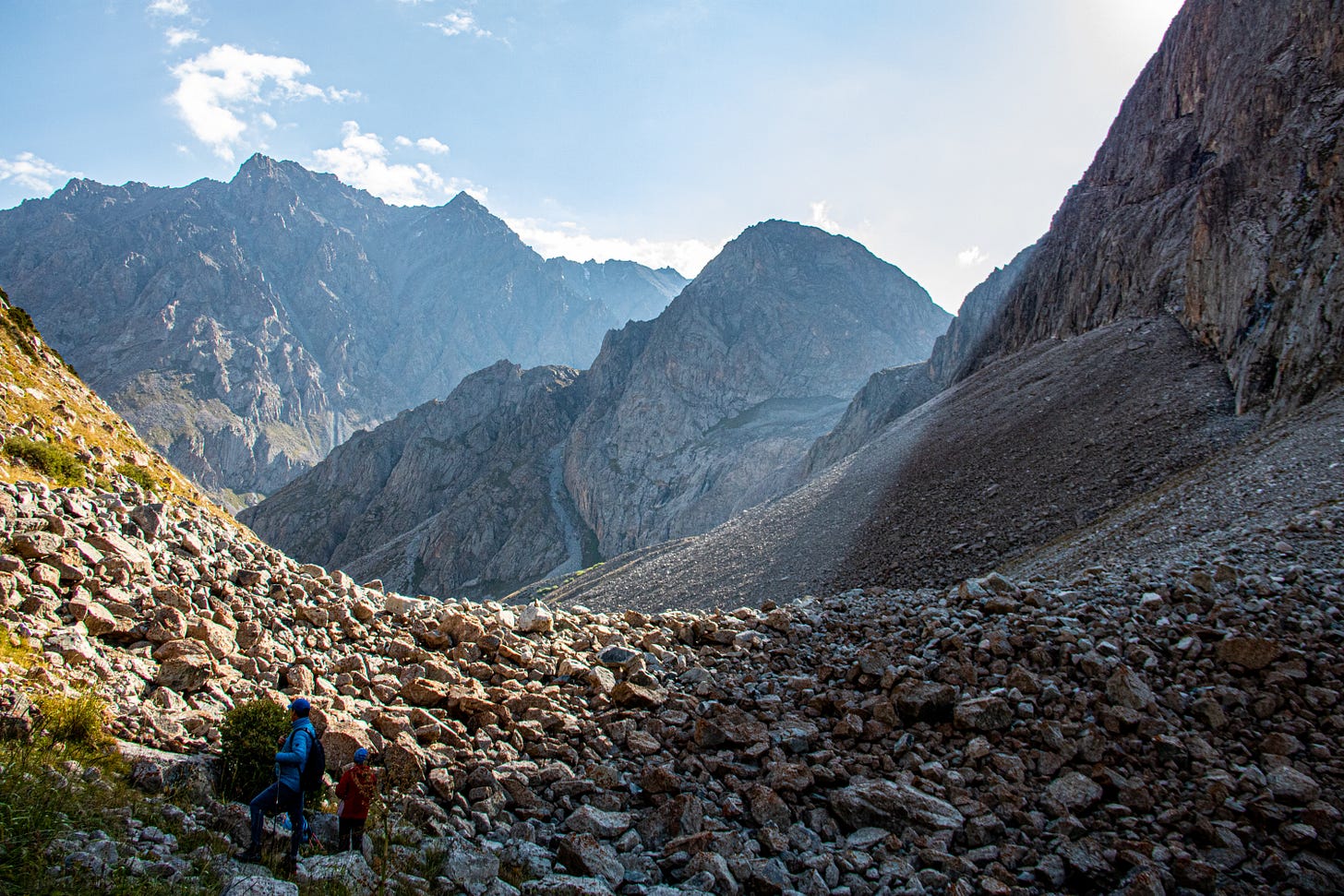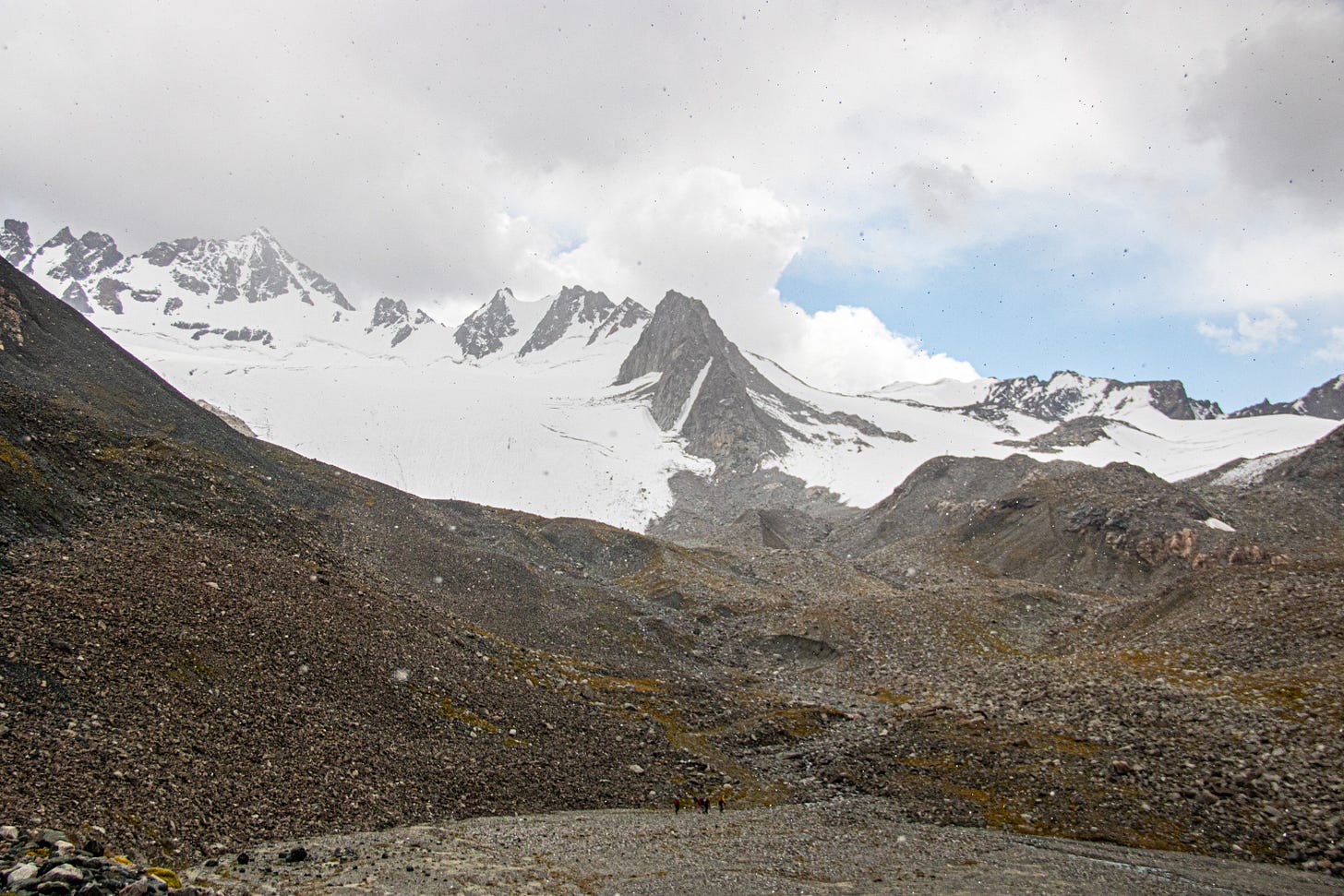In the summer of 2021, I spent around 3 months in Kyrgyzstan. As you might know by now from my first post of this series, I volunteered for a contemporary art association, and thanks to this, I was able to meet a lot of nice people.
In the previous post, I talked about a weekend trip to Kel Suu Lake, and on that trip, I met Kami, an internal designer who is half Uigur and half Polish. During that trip we became friends and talked a lot, during our chat she discovered that till then I hadn’t visited Ala Archa National Park, so she invited me to a hike there.
Ala Archa National Park, located in the Tian Shan mountain range in Kyrgyzstan, is a breathtaking natural reserve known for its stunning alpine scenery, diverse flora and fauna, and opportunities for outdoor adventure. Established in 1976, the park covers an area of approximately 200 square kilometres (77 square miles) and is situated about 40 kilometres (25 miles) south of the capital city, Bishkek. "Ala Archa" translates to "bright juniper," reflecting the lush juniper forests that characterize the park's lower elevations.
The park's elevation ranges from 1,500 meters (4,900 feet) at the entrance to the towering Peak Semenov-Tian-Shansky, which rises to 4,895 meters (16,060 feet). This dramatic elevation change contributes to the park's diverse ecosystems, from subalpine meadows and dense forests to rugged high-altitude landscapes with glaciers and snowfields.
The park is home to a rich variety of plant and animal species. The lower regions are dominated by forests of juniper, birch, and willow, providing habitat for wildlife such as deer, boars, and numerous bird species. As you ascend, the vegetation transitions to alpine meadows adorned with wildflowers in spring and summer. At higher elevations, the landscape becomes more barren, with hardy shrubs and grasses clinging to rocky slopes.
Ala Archa also supports a variety of wildlife, including the elusive snow leopard, mountain goats, marmots, and eagles. Conservation efforts within the park aim to protect these species and their natural habitats.
Ala Archa National Park is a popular destination for outdoor activities, the park features numerous trails, from easy walks through the forest to challenging climbs. The park's high peaks attract climbers from around the world.
The goal of the hike I did was to reach the Great Alarchinsky Glacier, Kami told me that the length was 15 km one way, but she was wrong and she didn’t mention how difficult it was. The hike was a demanding yet rewarding adventure that took me through some of the most stunning and remote landscapes in Ala Archa National Park.
We started from the Ala Archa National Park entrance at around 6 am, the trek to the Great Alarchinsky Glacier is challenging and suited for experienced hikers and mountaineers. It involves navigating through rugged terrain, steep ascents, and high altitudes. The initial part of the hike is relatively straightforward, taking you through forested areas and alpine meadows. After a while, the trail becomes steeper and rockier as you ascend towards the Ratzek Hut. This hut is a popular stopover for trekkers heading to various peaks and glaciers in the region. The last part is the most demanding, involving high-altitude trekking and glacier navigation.
A couple of times, we had to cross rivers using improvised bridges, the first one was a metal structure, and as you can see from the video below it wasn’t that easy and I have to admit that I was quite scared. The second one was simply a trunk and there I had to experiment with my equilibrium.
Ala Archa National Park is home to numerous glaciers, predominantly of the valley and cirque types. Some of the most notable glaciers are Ak-Sai Glacier, one of the most prominent and accessible glaciers in the park, and Adygene Glacier, known for its relatively easy access and stunning ice formations.
The Great Alarchinsky Glacier is found in the upper reaches of the Alarcha Valley, around 3,800 to 4,000 meters (12,500 to 13,100 feet) in altitude, a remote and less frequently visited area compared to the more accessible Ak-Sai and Adygene glaciers. Due to its location, reaching the Great Alarchinsky Glacier typically involves a longer trek and is suitable for experienced hikers and mountaineers.
The Great Alarchinsky Glacier is characterized by its impressive size and length, making it one of the prominent glaciers in the park.
Weather in the mountains can be unpredictable. We faced all the seasons in one day, from warm temperatures to cold ones, sun, rain, and even snow.
After 6-7 hours of hiking, we reached the glacier, and at that time we did around 20 km, this means that at the end of the day, I did a marathon with a 2000m difference in altitude.
We rested for a couple of hours near the glacier, in an abandoned sky lodge from the Soviet period, we ate something and drank hot tea, and then we started our way back. I have to say that the way back for me was never-ending, I was exhausted, and the landscape changed from the way up because the rivers were bigger so I couldn’t understand how much I had left to walk to the park entrance. Because of that, we had to cross the river taking our shoes off, there weren’t any paths or the small bridges we used on the way up.
If Kami had told me the right amount of km we were going to do for sure I would have said no, but fortunately, she was wrong and I had this great adventure! I have to thank also Ashim, the father of the family I was living with in Bishkek because he lent me a jacket and some gear for hiking in these conditions.
With Kami we also visited an abandoned hotel in Bishkek, I have a passion for abandoned buildings, here you can read more about that, but about abandoned places in Kyrgyzstan, I will tell you next time.
See you soon
Flavio





















Just love the landscape!
Looks like a fantastic hike and region to explore!